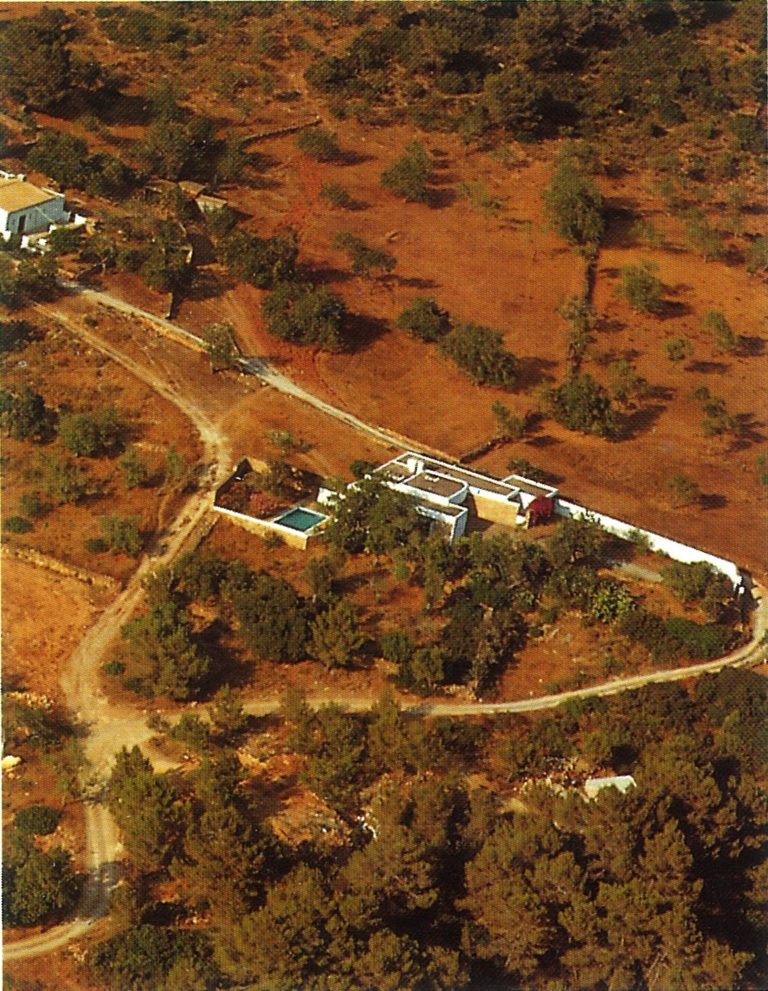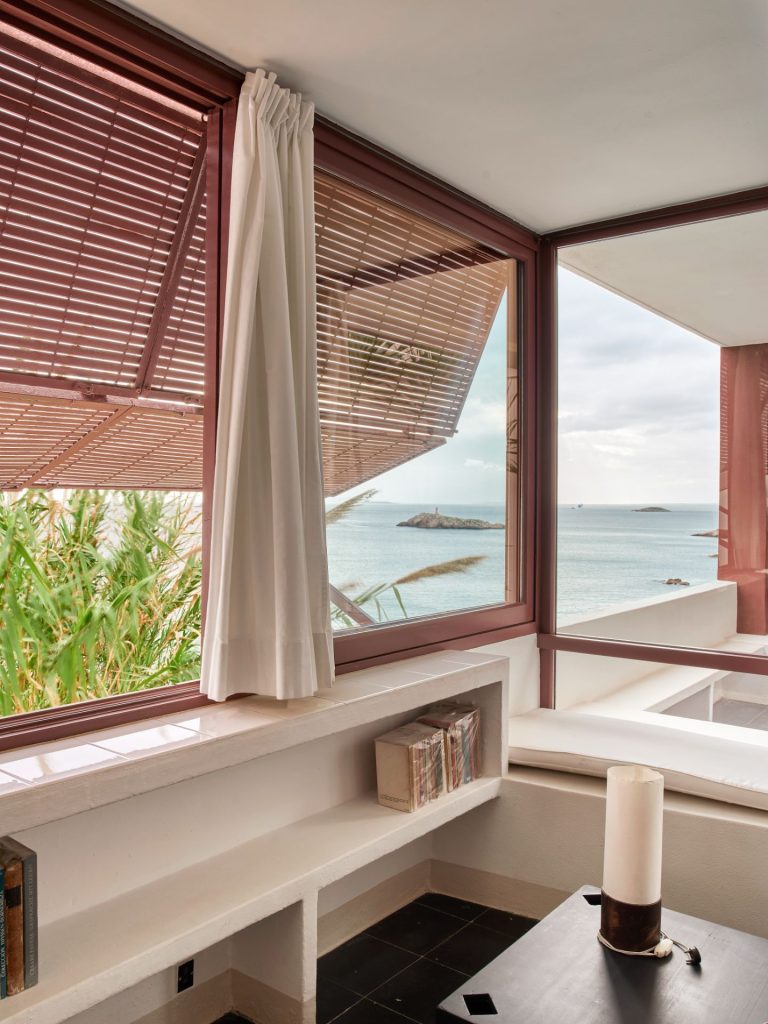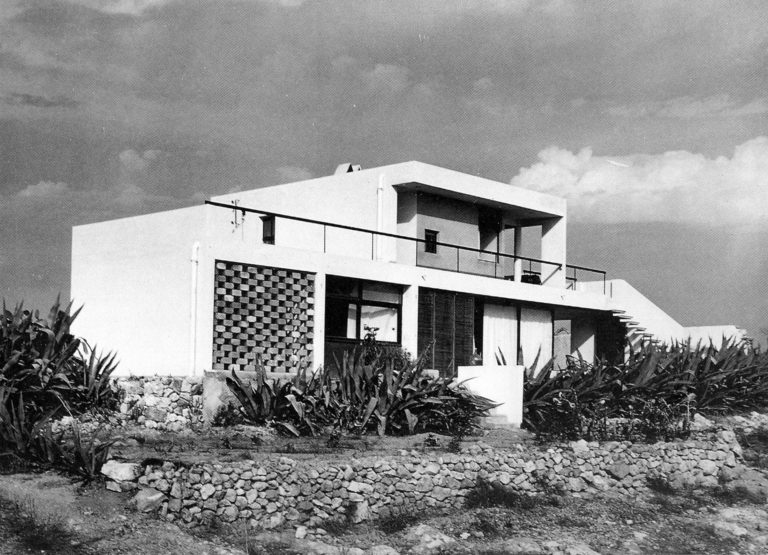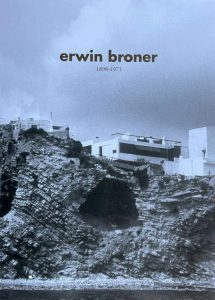Erwin Broner
Múnich, 1898 - Kreuth, 1972
Erwin Broner is an essential figure in understanding the transformation of Ibiza throughout the 20th century. His stays on the island from the 1930s until his death in 1971 coincided with different periods in Ibiza’s history, to which Broner was a witness and in which he played an active part.
The 1930s: Rural Architecture – Modern Architecture
Erwin Broner, trained as an architect and painter in Germany, arrived in Republican Spain for the first time in 1933 and, after visiting Ibiza, decided to settle there.
At that time, rationalist architecture, which had taken hold in central Europe and was making its way through Spain, had not yet reached Ibiza, although major rationalist architects had taken an interest in popular Ibizan constructions. According to Josep Lluís Sert, Broner contacted the GATCPAC in 1933: “He wrote to us from the island of Ibiza, which was almost unknown at the time, and he sent us a series of photographs and plans that were a veritable revelation for us. […] Some members of the group […] had recently visited Ibiza. But Erwin Broner had been there earlier; plus, he had travelled across the entire island by bicycle, documenting his exploration, which none of us had done.”[1] These studies were published in 1936 by AC magazine, along with two of the first rationalist constructions planned in Ibiza, designed by Broner: the Talamanca beach baths, built in 1934 and demolished in 1964, and a series of row houses designed in 1936 that were never built.
Broner was fascinated by Ibizan constructions, but unlike other Europeans who saw them as the image of an archaic world that had persisted in an isolated place, Broner understood them from a contemporary point of view and analysed them as such, breaking them down into the elements that made them “perfect and clearly functional homes in harmony with the economic situation of our times, which has not changed much on this island.”[2]
This attitude is essential to understanding his later work. It is also key to understanding what happened in Ibiza years later, from perspectives contrasting with that of Broner and which gave rise to what has popularly been referred to as “Ibizan architecture” – constructions that have proliferated not only in Ibiza but in other holiday destinations both in Spain and abroad.
From 1936 to 1958
When the Civil War spread to Ibiza, Broner was forced, like many others, to go into exile. He travelled to Palestine and Germany (1936-1937), lived in New York (1938-1939), Los Angeles (1939-1946 and 1956-1958) and Krumville (1948-?), and spent periods in France (Paris, 1946 and 1953; Collioure, 1946) and London (1957-1958).
His activities during those years were connected to architecture – it seems that he was a collaborator in the offices of Richard Neutra and May & Co in Los Angeles, and he built a house in Krumville in 1950 – and, to a greater extent, animated films – he worked for Georges Pal Productions, Inc. in Los Angeles – and he travelled to Paris and London to direct and participate in projects related to animated films. He also continued to paint, which motivated some of his travels.
1959 to 1971: The Definitive Return
Broner, aged 60, returned to Ibiza in 1959 to stay permanently. Although tourism had begun to bring changes to Ibiza, the island he knew in the 1930s had not changed much yet, and Broner began an intense period of activity as an architect, painter, agent in the island’s cultural life, and driver of citizen initiatives.
Just two months after returning to the island, he sparked the formation of the Ibiza 59 group. He drafted the founding document, in which nine artists were invited to participate: Erwin Bechtold, Hans Laabs, Katya Meirowsky, Bob Mumford, Egon Neubauer, Antonio Ruiz, Bertil Sjöberg, and Heinz Trökes, plus Broner himself. Active through 1964, the Ibiza 59 group had a major impact on the cultural life of the island. Its activities promoted the creation of new art galleries, as well as the Biennial of University Art and the creation of Ibiza’s Museum of Contemporary Art, while attracting new artists to the island.
Broner’s work as an architect is concentrated in this same period, from 1959 to 1971. He reintroduced a modern architectural language to the island with his first creations from 1960: the Strauss house, his own home in Travessia de sa Penya, the Laabs residence, and the Kauffman house. His designs drew on a sensitivity towards the place and took inspiration from the constructions that had been built in that rural environment. And his buildings made use of the means available to him in the Ibiza of 1960, while applying contemporary criteria. He adopted certain elements of popular architecture that are common in the rationalist language: he introduced cement, fibre cement, and concrete block; he used large windows and occupied roof spaces. He also designed the furniture for the homes he built, as well as the partitions, and he improvised imaginative solutions to resolve details and make up for the lack of technology.
His clients, which included friends and foreigners with ties to the cultural sphere, were open to these innovations in architecture. Some of his buildings were new constructions, and others were interventions in existing rural buildings. The 30 houses he built in Ibiza and Formentera constitute an architectural heritage of undeniable value.
Impact of Erwin Broner and His Work
Despite having lived in Germany, Paris, the United States and London, and having been in contact with renowned figures in the field of architecture and painting, Erwin Broner’s work is little known. His architecture has hardly been published except in two posthumous monographs dedicated to his work by the Architects’ Association of the Balearic Islands. His paintings received some attention between 1955 and 1964 in the press and certain specialized magazines.
Broner was not a prolific author. His known writings are scarce: a study on Ibizan rural architecture, a few articles on painting and the Ibiza 59 group. Nothing on architecture.
It was not until after his death that some interest in his architectural work began to arise, with the rehabilitation of his house in Sa Penya in 2010 and its opening as a house museum in 2011.
[1] In D’a: Revista Balear d’arquitectura, 11-12 [monographic dedicated to Erwin Broner: Erwin Broner, 1998-1971], April 1994, p. 25.
[2] HEILBRONER, Erwin, “Ibiza (Baleares). Las viviendas rurales”, in AC 21, first quarter of 1936, p. 15.
Biography by Susana Landrove
Bibliography
D’a: Revista Balear d’arquitectura 11-12 [monographic dedicated to Erwin Broner: Erwin Broner, 1998-1971], April 1994 [Reissued in 2023].
- FELIU, Isabel, Ollé, Raimon, “Casa Broner. La mirada alzada”, in Pizza, Antonio, ed., Habitar la isla blanca. Interpretaciones de la arquitectura ibicenca, Ediciones Asimétricas, Madrid, 2022.
- OYA JIMÉNEZ, Manuel Ignacio de, Erwin Broner, Itinerància a Eivissa de les obres del llegat de Gisela Broner a Catalina Verdera Ribas [exhibition catalogue], Author’s edition, 2020.
- VALERO, Vicente, Viajeros contemporáneos, Ibiza, siglo XX, Pretextos, Valencia, 2004, pp. 22-24.
- AA VV, Grupo Ibiza 59. Passat i Present [exhibition catalogue], Museu d’Art Contemporani d’Eivissa/Ajuntament de Palma, 1992.
- “Erwin Broner en Ibiza”, en Quaderns 153, Col·legi Oficial d’Arquitectes de Catalunya, Barcelona, September 1982, pp. 8-21.
- Erwin Broner: ciudadano-arquitecto-pintor (1898), Ibiza 1934-1971, November 1980-June 1981, La Gaya Ciencia, Barcelona, 1981.
- HEILBRONER, Erwin, “Ibiza (Baleares). Las viviendas rurales” [1936], in AC 21, primer trimestre 1936, págs. 15-21 [Reissued in AC. Publicaciones del GATEPAC, Fundación Arquia, Barcelona, 2005].







